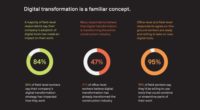
Foundation work for a new chimney at a 65-year-old powerplant in Meredosia, Ill., is under way for a $1.65-billion retrofit designed to create a prototypical commercial-scale coal-fired facility equipped with carbon capture and sequestration (CCS), says Lawrence Pacheco, spokesman for FutureGen Industrial Alliance Inc.
This is the first construction work to be performed on the project, which was originally proposed more than 10 years ago. The project is under a September 2015 deadline to use or forfeit $1 billion in American Recovery and Reinvestment Act funds, received in 2010 on approval from the Obama administration. Additional pressure comes from a Sierra Club filing, in July, with the Illinois Pollution Control Board (IPCB).
Work started almost simultaneously with the Environmental Protection Agency's announcement, on Sept. 2, that it granted FutureGen the first-ever Class VI underground-injection permits, allowing for carbon storage near Jacksonville, Ill., in a geologic saline formation 4,000 ft underground.
Pacheco said the permit was a major milestone for the project—known as FutureGen 2.0—which, nevertheless, faces considerable financial and legal challenges. Sierra Club's complaint says the facility was improperly awarded a minor-source permit, allowing it to emit 1,691.7 tons of nitrogen oxides (NOx), the environmental group said. A "prevention of significant deterioration" (PSD) permit would more adequately reflect the project's "net-zero emissions" claims.
"We feel that the project was awarded a minor-source permit, which does not impose carbon or other emissions limits," says Sierra Club attorney Eva Schueller. "We are not challenging the technical aspects of the facility's zero emissions claims, but feel the project should have to apply for a PSD based on those claims and the size of the new boiler at the facility."
In written testimony presented to the IPCB, FutureGen CEO Ken Humphreys says Sierra Club's complaint "casts a dark shadow over the ongoing commercial financing effort, which raises substantial investor concern," he said, adding, "The [U.S. Dept. of Energy] funding carries with it a spending deadline, and delays put this funding at risk of irrecoverable loss." The plant needs another $650 million in private equity and debt financing to reach financial close, Pacheco says.
In addition, oxy-combustion technology, in which coal is fired with pure oxygen instead of air, has been criticized for not being commercially viable. "That is the whole purpose of the Meredosia project," says Howard Herzog, a senior research engineer at the Massachusetts Institute of Technology who specializes in CCS technology. "This project will help us understand what some of the primary costs for deploying this technology at this scale are and how to drive those costs down. The technology has not been tested at this scale before, but we believe it is sound," he says.
Neither the equity or debt markets will finance the project while Sierra Club's claim remains outstanding. "Therefore, the mere presence of the claim is damaging to the project and threatens the alliance's ability to obtain the private-sector financing necessary for the project to advance," Humphreys says.
There are three main construction components to the retrofit of the 229-MW coal unit, including installation of the new oxy-combustion technology, a 30-mile pipeline to transport carbon dioxide and an underground storage facility into which CO2 will be injected. The project is structured as a private-public partnership with the DOE, Pacheco says.
Primary contractors on the project, Air Liquide and Babcock & Wilcox, referred all questions to FutureGen, whose primary stakeholders include Peabody Energy, Alpha Natural Resources and AmerenEnergy Medina Valley Cogen. "The project partners are some of the leading companies in the world in developing clean coal technologies and are determined to create the first zero-emissions coal plant in the world," Pacheco says. "We are very close to completing the key deliverables of this phase of construction—phase two—which are the final engineering and design plans."




Post a comment to this article
Report Abusive Comment